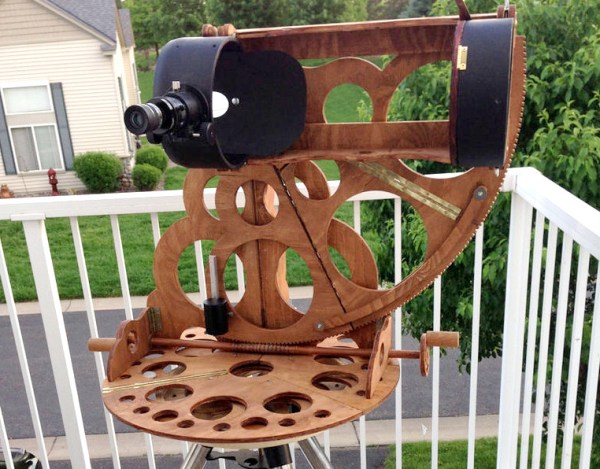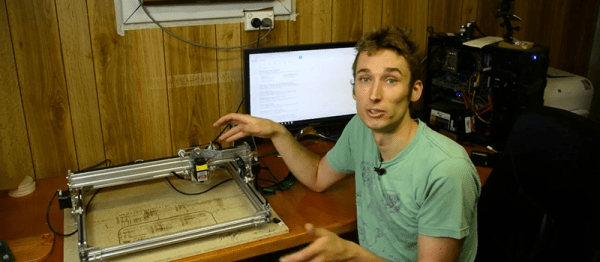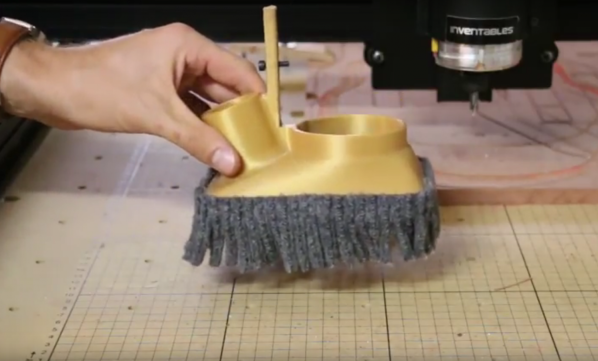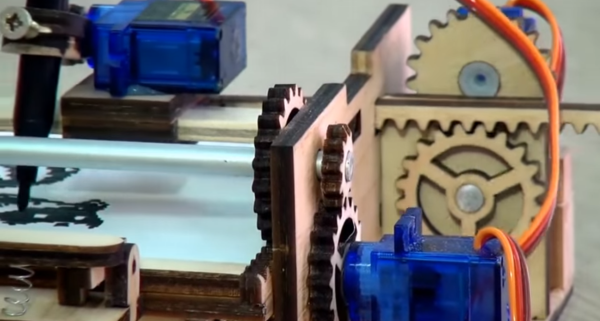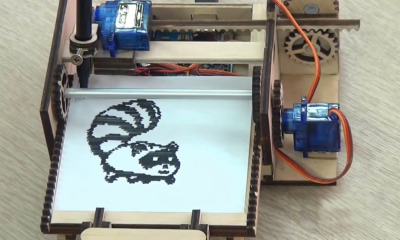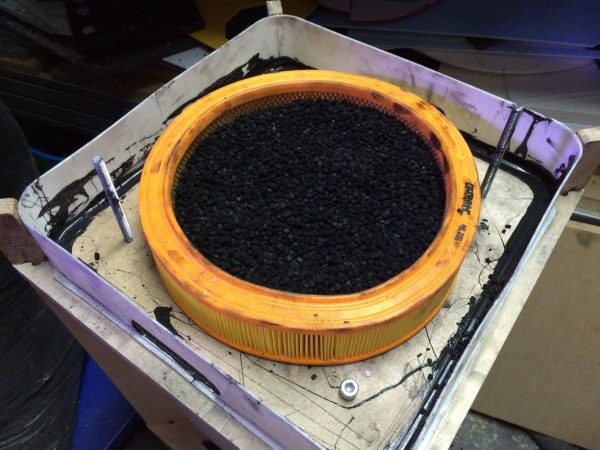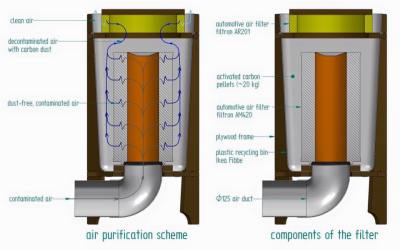[GregO29] had a 10″ GoTo telescope but at 70lbs, it wasn’t really portable. And so he did what any self-respecting CNC enthusiast would do, he put his CNC skills to work to make an 8″ Newtonian reflector, semi-Nasmyth mount telescope of his own design. It also gave him a chance to try out his new Chinese 6040 router/engraver with 800W water-cooled spindle.
What’s all that fancy terminology, you say? “Newtonian reflector” simply means that there’s a large concave mirror at one end that reflects a correspondingly large amount of light from the sky to a smaller mirror which then reflects it toward your eye, preferably along with some means of focusing that light. “Semi-Nasmyth mount” means that the whole thing pivots around the eyepiece so that you can keep your head relatively still (the “semi” is because the eyepiece can also be pivoted, in which case you would have to move your head a bit).
We really like the mechanism he came up with for rotating the telescope in the vertical plane. Look closely at the photo and you’ll see that the telescope is mounted to a pie-shaped piece of wood. The curved outer circumference of that pie-shape has gear teeth on it which he routed out. The mechanism that moves these teeth is a worm screw made from a 1″ spring found at the hardware store that’s on a 3/4″ dowel. Turn the worm screw’s crank and the telescope rotates.

